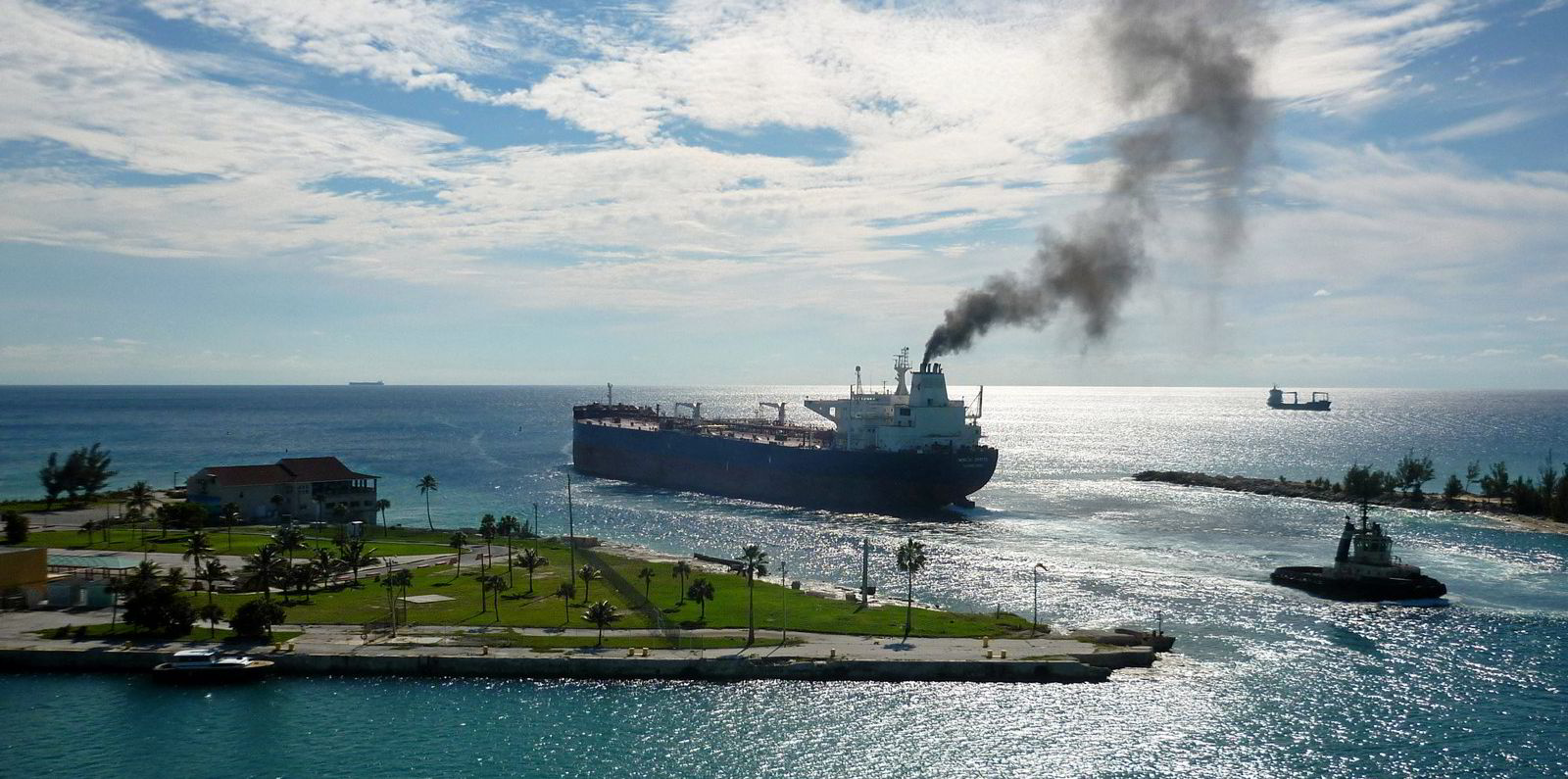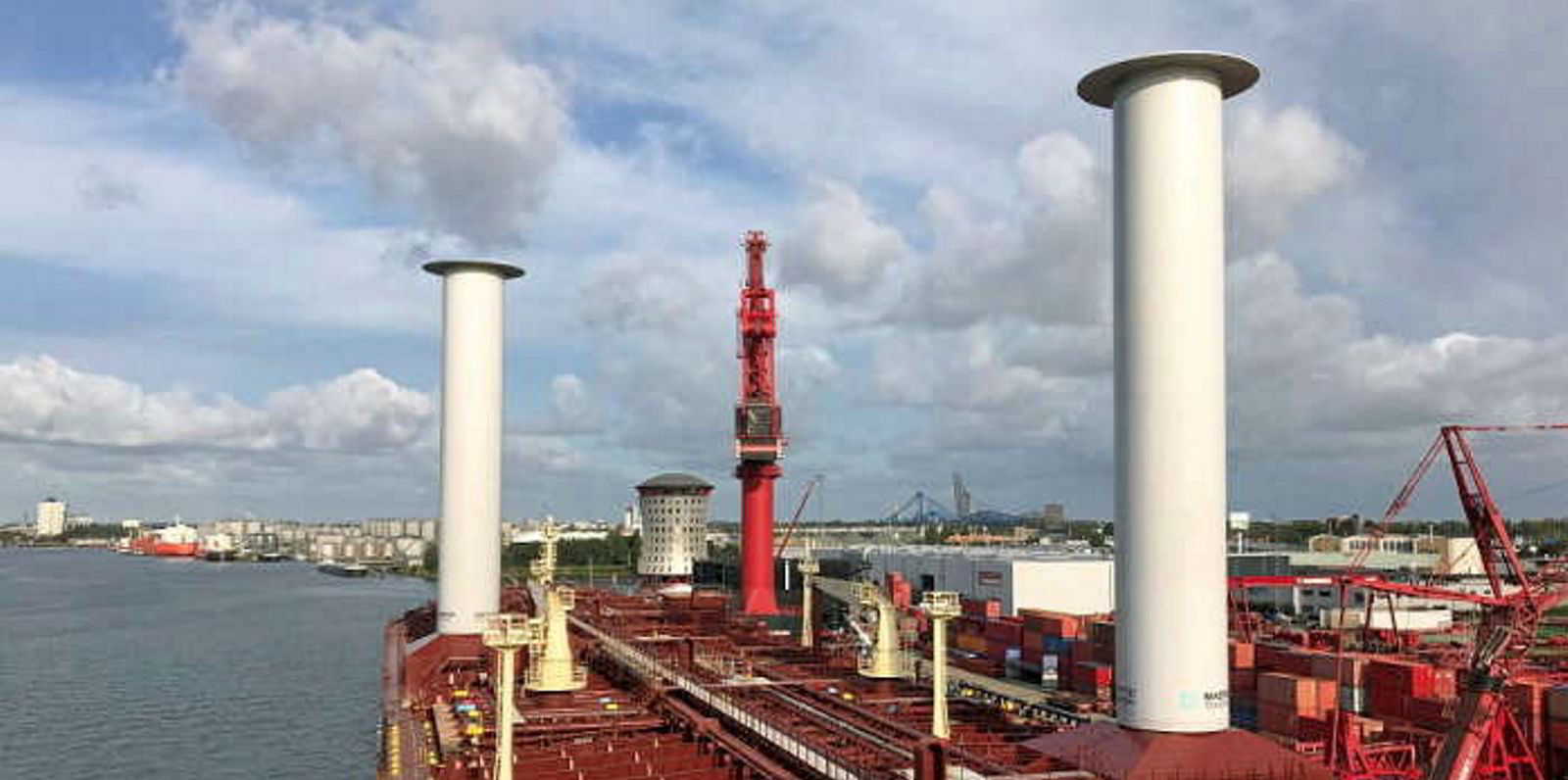The International Chamber of Shipping wants the global shipping regulator to put a price on carbon by 2024.
But why so fast?
Simon Bennett, the ICS deputy secretary general, told the Green Seas podcast that targeting net zero greenhouse gas emissions by 2050 and the fear of a proliferation of national carbon pricing mechanisms are behind the ambitious timeline.

He said the organisation has recognised for some time that a carbon pricing mechanism is inevitable.
But with green fuels like hydrogen and ammonia priced at two to three times that of conventional shipping fuels, a levy that closes the gap could be so prohibitively expensive that it would not be acceptable to some governments.
The ICS sees its fund-and-reward proposal as a more palatable solution.
“We realised that actually, in the first few years of implementation, only a relatively small proportion of the world fleet is going to be transitioning to new fuels,” he said.
“So if we have a carbon levy that raises funds by targeting those funds on providing rewards to ships which use these new fuels, that’s a means of having a price on carbon, but we can keep the quantum of that price relatively low in order to make it politically acceptable.”
Narrowing the gap
As TradeWinds has reported, the ICS proposal would see shipping companies pay a price per tonne of carbon that would at first narrow, but not eliminate, the price gap. That money would go into an International Maritime Organization fund and then would be spent on rewarding shipping companies that adopt greener fuels.
The shipping group has not proposed a price, but it said that if it is set at $50 per tonne of carbon, which equates to about $150 per tonne of bunker fuel, it could raise $10bn per year to help incentivise green fuel adoption.

That, in addition to addressing what Bennett called the legitimate concerns of some countries about a high carbon tax, would still contribute to the main goal of incentivising ships to use green fuels and energy companies to produce them.
Bennett acknowledged that adopting the plan by 2024 is an ambitious timeline for the IMO, which is not known for moving fast.
‘Utmost importance’
“Nevertheless, we think it’s of the utmost importance that an economic measure is adopted as soon as possible,” he said.
One reason for the proposal is that the IMO is expected in July to adopt a net zero or zero-carbon target for shipping to reach by 2050.

“So if we’re going to be serious about actually delivering such an ambitious goal, then we have to start work on the uptake of these new fuels as soon as possible,” Bennett said.
“If we can get a measure in place in the next couple of years, our goal would be, by the year 2030, for about 5% of the energy used by international shipping to be generated by alternative fuels. And then that will then provide us with the kick-start we need for the far more accelerated transition that will then need to take place between 2030 and 2050.”
But there is another key reason for the timeline: Shipping will enter the European Union Emissions Trading System in 2024 and will have to start paying carbon allowances in 2025.
“Apart from that, and the hope that we can have some kind of global uniformity between the IMO system and the EU system, we’re very worried that in the absence of progress on an economic measure at the IMO we will see the proliferation of other national carbon pricing systems being applied to international shipping, and that will result with absolute chaos,” Bennett said.
Higher prices
There are other proposals in the works that put forward higher prices, including one led by the Marshall Islands’ plan calling for a $100 per tonne carbon price at the start.

He told Green Seas that what is most important to push shipping to reduce emissions is to establish the right incentives, but many of the plans on the table are complicated.
“The good thing about the ICS proposal is simply that they say there should be a flat rate for emissions and those monies should not be paid to governments, but to a separate fund, and that fund should go use the money for the benefit of those shipowners who would use, for example, alternative fuels,” Rosaeg said.
He said it is a tax that raises money not for fiscal purposes but rather to level the playing field.
And Rosaeg said the IMO is not new to collecting taxes and administering funds. Its International Oil Pollution Compensation Funds have been collecting money for spills since 1971.
But is $50 per tonne, or even $100 per tonne, enough to push shipping in the right direction?
Madadh MacLaine, secretary general at the Zero Emissions Ship Technology Association (Zestas), does not think so.
“For it to have any real impact, and there’s been a number of studies done on this, it needs to be over $200. It needs to be bigger than that. And I don’t think anybody’s bringing in anything of that size,” she said.

Anything below $200 per tonne of carbon is within the normal fluctuations in fossil fuel prices. The cost of those fuels rises and falls, and that does not stop vessel operators from paying the price and it does not stop ships from shipping.
“Sorry to say this, but it’s got to hurt,” MacLaine said.
But she said the impact on countries is important to consider because it has to hurt in the right places and not in the wrong places.



